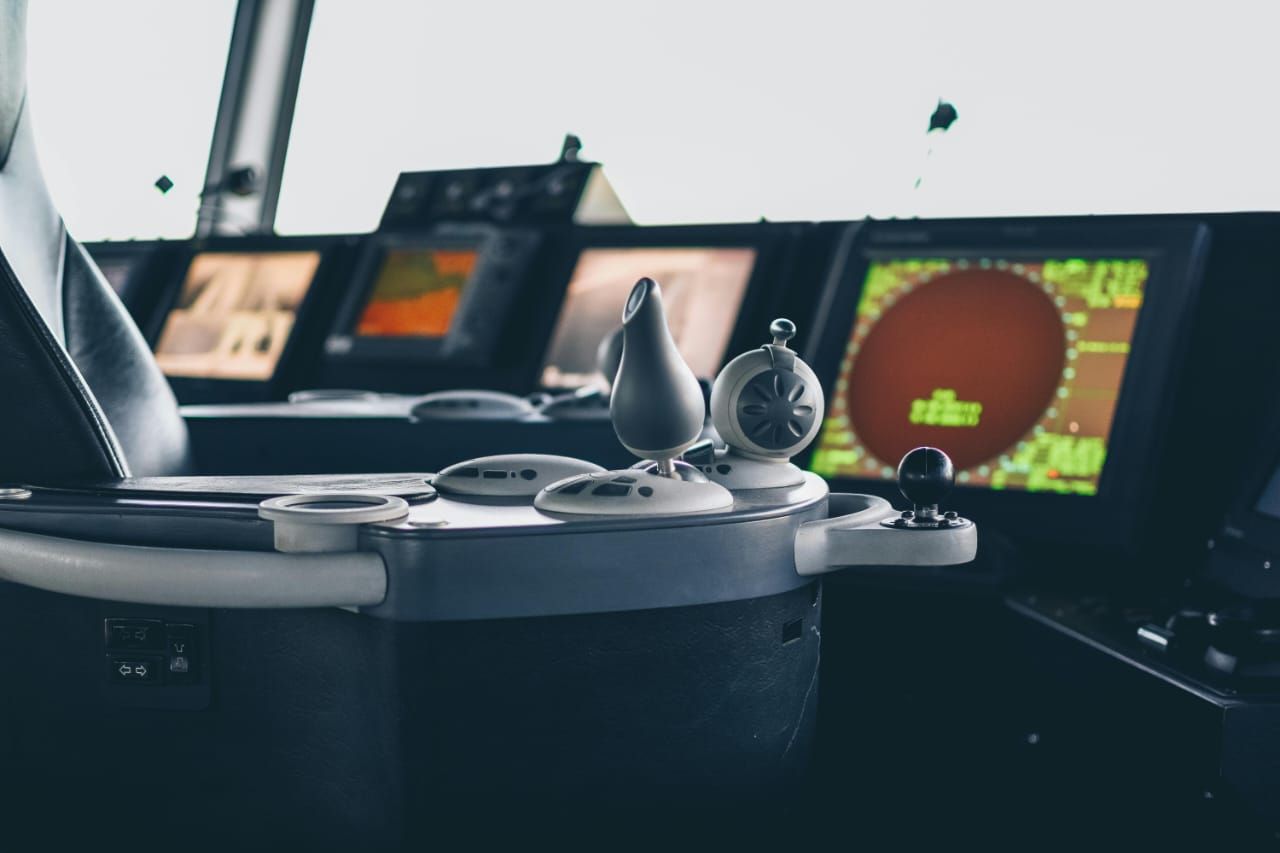Technological advancement now forms the backbone of maritime domain awareness, and thus the monitoring, securing, and governing of ocean spaces by states and regional bodies.
More specifically, piracy, trafficking, and Illegal, unreported, and unregulated (IUU) fishing are threats in Africa, and more specifically, the Gulf of Guinea and Indian Ocean, that require more advanced solutions capable of working around constraints of resource and capacity.
This article looks at how the introduction of drones, big data analysis, AI monitoring, and information sharing platforms is changing maritime surveillance and safety.
It engages in a discussion on the pros and cons of these types of tools, looks at instances of a practical application in Africa and beyond, and attempts to reflect on how the concept of innovation can be beneficial for governance, rapid response, and cooperative security in the maritime domain.
Introduction
The maritime domain has always been relevant for international commerce, resource acquisition, and the projection of geopolitical power. For African states dependent on trade and/or activities along coastal waters, securing these waters becomes an issue of economic survival as much as it is of security.
But piracy in the Gulf of Guinea, drug trafficking/ smuggling through West African ports, and large-scale IUU fishing in both the Atlantic and Indian Ocean coasts continue to be destabilizing forces that lead to declining state revenue (International Maritime Bureau, 2022).
The existing models of maritime security predominantly focused on naval presence and limited infrastructure on coastlines, which set up a paradigm that struggled to adapt to the scale and scope, and transnational nature, of these threats.
Over the past few years, technological innovation has been a “disruptor” in terms of maritime security and governance. UAVs take the surveillance “further than a human patrol could or would want to go,” while big data and A.I. provide huge processing power for massive amounts of data as well as predictive risk assessment and early warning.
Information-sharing forums offer states a means of cooperating transnationally to repair the fragmentation that made an effective response more difficult to achieve. The latter is indicative of the understanding that “maritime domain awareness” means not only physical presence but also digital presence and intelligence.
The technologically oriented shift towards MDA has significant implications for the future of Africa’s seas. It provides possibilities that help to address issues of a lack of ships or finances, but at the same time, can be problematic in terms of issues of sovereignty, interoperability, and dependence on third parties.
One has to be aware of the potential and threats of these technologies to ensure that innovation is an addition to the African ownership of the maritime governance regimes rather than a deterrent.
The Expanding Role of UAVs in Maritime Surveillance
The use of unmanned aerial vehicles has transformed the ability to survey areas that would otherwise be prohibitively expensive and inefficient to monitor via traditional means because of the extensive coastlines.
Drones are capable of sweeping thousands of miles of ocean at much lower costs than using aircraft or ships, and provide high-resolution images, real-time video, and sensor data.
UAVs are currently implemented in pilot programs in the Gulf of Guinea to follow the tracks of suspicious vessels involved in oil theft or piracy, providing intelligence that impacts the naval sensor strategy of interception (Okafor-Yarwood & Adewumi, 2020).
In addition to access, UAVs offer flexibility. Thermal imaging and radar-equipped drones can operate in low-visibility situations and can easily track and intercept small, high-speed vessels used by pirates or traffickers.
In this way, UAVs are an affordable option to help bring resource-poor states up to par with more advanced criminal actors. But, there are still issues of incorporating UAV data into the command structures of nations, having legal clarity over their use of them, and funding their operations.
Harnessing Big Data and AI for Maritime Domain Awareness
Big data analytics and AI-based technologies are playing a vital role in converting raw maritime information into usable intelligence. Automatic Identification System (AIS), satellite images, inspections of ports, as well as oceanographic data, all produce massive amounts of data that cannot be field-monitored traditionally.
Machine learning models can use this data to detect patterns such as vessels deactivating their AIS, vessels moving in atypical patterns, or vessels idling in protected areas.
Among its applications, in East Africa, the use of AI-based satellite surveillance has assisted in the detection of IUU fishing vessels in the Western Indian Ocean, allowing interception by authorities of the offenders (FAO, 2022).
Predictive analytics also helps police to identify areas that are at a higher risk of piracy or smuggling, moving the paradigm of security from a reactive patrol to a proactive one.
The real promise of AI is to integrate and analyze data from unrelated sets and provide associations that would be undetectable by human analysts. This also brings ethical and technical problems of its own.
Some of those are algorithmic bias, data privacy, and black-box decision making. These kinds of problems are indicative of the call for an appropriate governance regime that provides accountability and transparency in the use of AI for MDA.
Innovation through Information-Sharing Platforms
A single state is unable to efficiently control its maritime space by itself. So, regional information sharing mechanisms became an important component of maritime domain awareness efforts. These eventually culminated in the 2013 Yaoundé Architecture for Maritime Security, which created a series of information and coordination centers across West and Central Africa.
These centers allow navies, coast guards, and local organizations to communicate in real time with one another, and make responses to piracy quicker and trafficking easier to interdict (Onuoha, 2021).
In addition to Africa, a trend in this direction can be seen with the European Union’s Maritime Surveillance system, MARSUR, or the International Maritime Organization’s Global Integrated Shipping Information System, GISIS. These platforms serve to enhance not only situational awareness but trust between states and to help in overcoming historical rivalries and capability gaps.
But information dissemination is still a problem. States might be reluctant to publish sensitive data because of issues related to sovereignty or just not to trust neighbors. Technical interoperability and cybersecurity weaknesses are also not effective. Political willingness as well as investment into secure standardized systems that prioritize mutual benefit over any else, is what it takes to overcome these barriers.
Challenges and Opportunities in Technological Adoption
UAVs, big data, and AI in the administration of the seas open new possibilities, but also pose new limitations. On the one hand, these technologies allow even poor states to expand their surveillance capacities and achieve a rapid reaction to threats.
The former of course, requires significant investments in infrastructure, technical and legal knowledge. Most African countries still need to rely on foreign donors or private partners when it comes to accessing advanced tools, which casts doubts on sustainability and ownership in the long run.
The key will be whether the institutionalization of these tools will be possible within the national systems of governance, whether local technical capacities can be developed, and whether technologies can be contextually adapted to local realities.
Policies such as the AIMS 2050 policy of the African Union and the African Blue Economy Strategy represent important policy anchor points, but they will remain successful only if there is political will and resources moving them in the right direction.
Conclusion
Technology has increasingly become the differentiating factor in maritime domain awareness and innovation. UAVs expand the reach of surveillance, predictive intelligence is made possible through AI capabilities, and information-sharing platforms close jurisdictional gaps.
The combination of these tools allows for the potential transformation of ‘maritime governance’ from primarily reactive enforcement into a more proactive and cooperative security of the seas.
For Africa, this technological promise must not only be in the protection of its waters from piracy, trafficking, and IUU fishing, but also in providing more legitimate and effective maritime governance.
These tools need to be adopted with building capacity, reforming laws, and strengthening regional collaboration in order to be sustainable and owned locally.
The policy conundrum then does not lie in whether or not to adopt these technological advancements, but rather in how to integrate them into a corresponding longer-term governance agenda that secures both security and development.
About the Author
Linda Etta is a Marine/Maritime expert with over a decade of experience in providing policy and technical support to public and private institutions on ocean-based issues. She is presently the Senior Blue Economy Adviser at the African Union Commission.
References
FAO. (2022). The state of world fisheries and aquaculture 2022: Towards blue transformation.http://openknowledge.fao.org/items/11a4abd8-4e09-4bef-9c12-900fb4605a02
International Maritime Bureau. (2022). Piracy and armed robbery against ships: Report for the period 1 January–31 December 2021. https://www.icc-ccs.org/reports/2021_Annual_IMB_Piracy_Report.pdf
Okafor-Yarwood, I., & Adewumi, I. (2020). The blue economy–cultural livelihood–ecosystem conservation nexus in West Africa. Marine Policy, 117, 103947. https://www.frontiersin.org/journals/marine-science/articles/10.3389/fmars.2020.00586/full
Onuoha, F. (2021). Maritime security cooperation in the Gulf of Guinea: Prospects and challenges. African Security Review, 30(2), 176–194. https://digital-commons.usnwc.edu/cgi/viewcontent.cgi?article=1165&context=nwc-review






